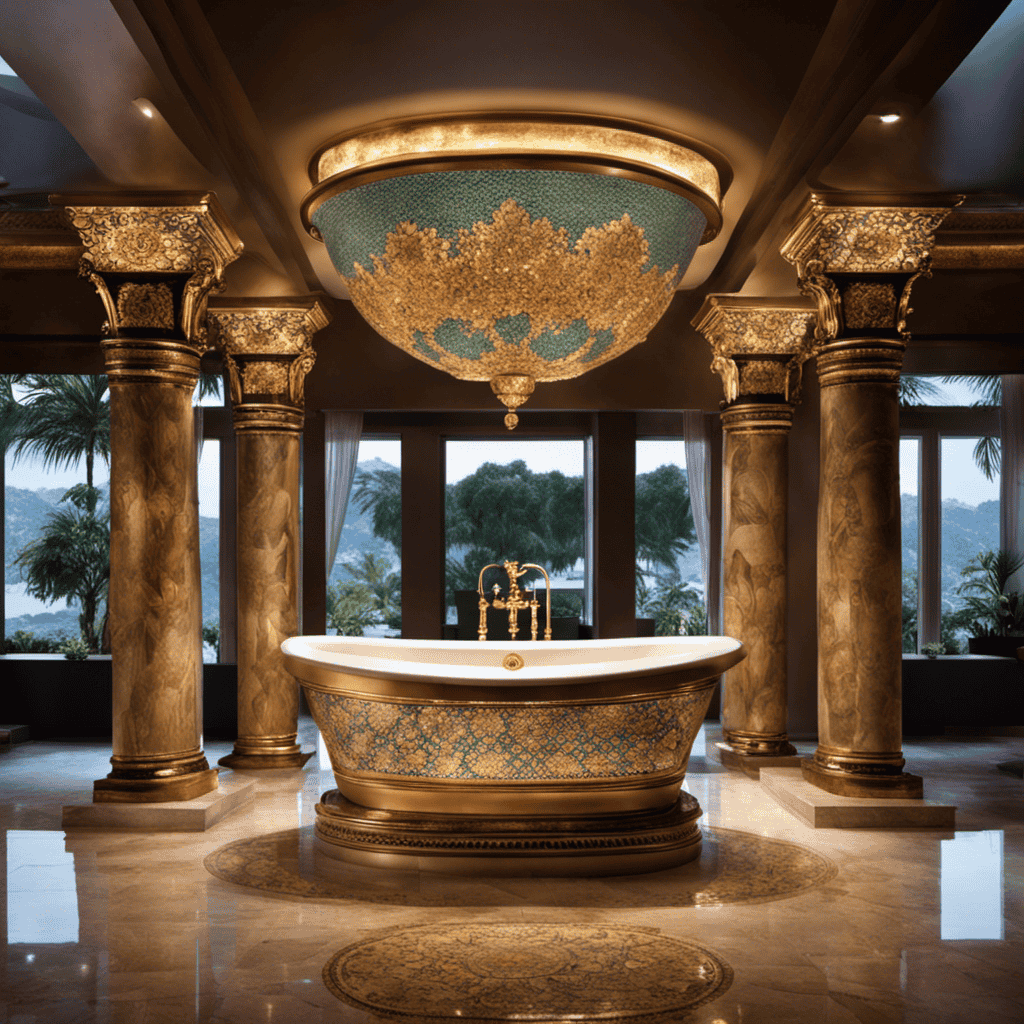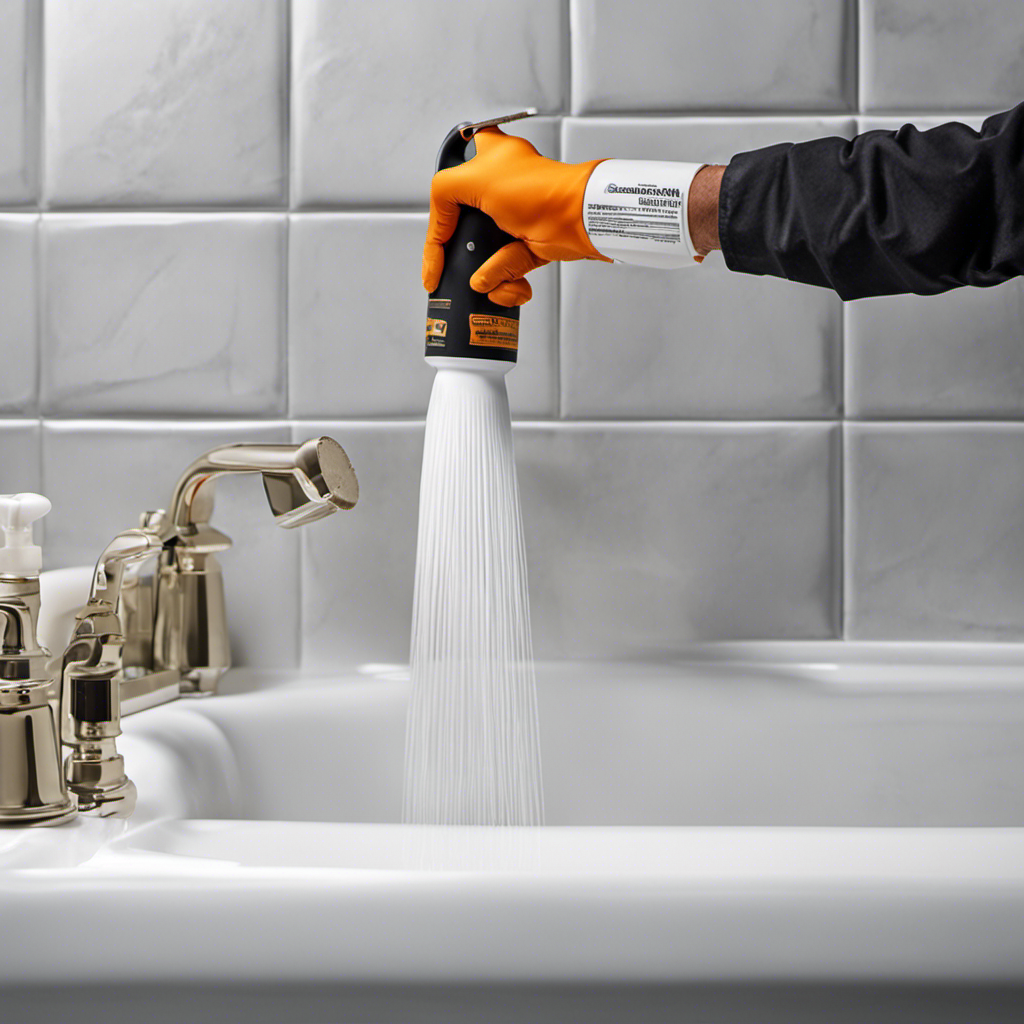As I step into the ancient Roman bathhouse, the warm water envelops my body, transporting me back in time. What is a Roman bathtub, you ask?
It is a marvel of engineering and luxury, designed to cleanse both body and soul. In this article, I will delve into the history, construction, function, and significance of these magnificent structures.
Join me on this journey as we explore the world of Roman bathtubs and uncover the secrets they hold.
Key Takeaways
- Roman bathtubs were an integral part of the ancient Roman culture and bathing rituals.
- They were made from durable materials like marble and limestone and were adorned with luxurious materials like intricate mosaics and frescoes.
- Roman bathtubs served multiple purposes, including promoting cleanliness and hygiene, providing relaxation and socializing spaces, and contributing to public health and community well-being.
- The design and construction techniques of Roman bathtubs have had a lasting influence on modern spas, luxurious bathrooms, and personal care routines.
History of Roman Bathtubs
Now, let’s dive into the intriguing history of Roman bathtubs.
Roman bathhouses were an integral part of ancient Roman culture and played a significant role in their bathing rituals. The Romans valued cleanliness and believed in the therapeutic benefits of bathing.
Bathhouses were social spaces where people gathered to relax, socialize, and cleanse themselves. They were opulent structures with multiple rooms, including hot, warm, and cold baths, as well as saunas and exercise areas. These bathhouses were adorned with beautiful mosaics, marble columns, and intricate frescoes.
The Romans embraced bathing as a communal activity and a symbol of their advanced civilization. The bathing culture of the Romans laid the foundation for the construction and design of Roman bathtubs, which we will explore in the next section.
Construction and Design of Roman Bathtubs
To understand how they were built and designed, imagine yourself stepping into one of these ancient bathing structures. Roman bathtubs were constructed using a variety of techniques and materials that showcased the advanced engineering skills of the Romans. Here are some key aspects of their construction:
-
Hypocaust System: The floors of the bathhouses were elevated to allow hot air to circulate underneath, creating a warm environment.
-
Concrete: Romans utilized a unique form of concrete called ‘opus caementicium’ to build the walls and vaults of the bathtubs. This mixture consisted of lime, sand, and volcanic ash.
-
Marble and Mosaic: The walls and floors were adorned with luxurious materials such as marble and intricate mosaic designs, showcasing the Roman’s attention to detail and aesthetics.
-
Plumbing: Elaborate plumbing systems were installed to ensure a constant supply of water and efficient drainage.
The combination of these construction techniques and materials resulted in impressive and functional Roman bathtubs that still captivate us today.
Function and Purpose of Roman Bathtubs
Step into one of these ancient bathing structures and you’ll discover the function and purpose behind them. Roman bathtubs were made primarily from materials such as marble, limestone, and mosaic tiles. These materials were chosen for their durability and ability to retain heat, ensuring a relaxing and enjoyable bathing experience.
One of the key benefits of using Roman bathtubs was their ability to promote cleanliness and hygiene. The Romans believed in the importance of regular bathing for both physical and spiritual well-being.
Additionally, the baths served as social spaces where people could gather, socialize, and engage in leisure activities. The communal aspect of the Roman baths fostered a sense of community and provided an opportunity for individuals from different social classes to interact.
The function and purpose of Roman bathtubs were not only practical but also played a significant role in shaping Roman society and culture.
Significance and Influence of Roman Bathtubs
Immerse yourself in the significance and influence of these ancient bathing structures. Roman bathtubs have had a profound impact on modern baths and continue to hold cultural importance. Here are four reasons why:
-
Architectural Inspiration: Roman bathtubs have influenced the design and layout of modern-day spas and luxurious bathrooms, with their grandeur and attention to detail.
-
Hygiene Practices: The Romans valued cleanliness and believed in the therapeutic benefits of bathing. Their bathing traditions laid the foundation for the importance of personal hygiene that we still adhere to today.
-
Socialization and Recreation: Roman bathhouses were not just places to clean oneself; they were also social gathering spots where people could relax, socialize, and engage in recreational activities.
-
Public Health: The Romans understood the importance of public health and built elaborate bathing complexes that served as communal spaces for hygiene, contributing to the overall well-being of their communities.
The influence and cultural importance of Roman bathtubs cannot be understated, as they continue to shape modern bathing practices and our understanding of personal hygiene.
Preservation and Restoration of Roman Bathtubs
Preservation and restoration efforts are crucial in maintaining the historical significance and cultural value of these ancient bathing structures.
Roman bathtubs, with their intricate designs and historical importance, require specialized preservation techniques to ensure their longevity. The restoration challenges faced by experts in this field are multifaceted.
One major challenge is the deterioration of the original materials used in the construction of these bathtubs, such as marble or terracotta. The restoration process involves carefully cleaning and repairing these materials, often requiring the use of specialized tools and techniques.
Additionally, the preservation of the intricate mosaics and frescoes found in Roman bathtubs is a delicate task. Experts must carefully remove dirt and grime while ensuring the preservation of the original artwork.
Through these preservation techniques and by overcoming restoration challenges, we can continue to appreciate and learn from these remarkable historical artifacts.
Conclusion
In conclusion, Roman bathtubs have played a significant role in history and continue to influence modern bathing practices. These meticulously constructed and beautifully designed structures served both a functional and social purpose, allowing individuals to cleanse their bodies and engage in communal activities.
Their preservation and restoration efforts ensure that future generations can appreciate the architectural marvels of the past. Like a well-preserved time capsule, Roman bathtubs offer a glimpse into the opulence and sophistication of ancient societies, reminding us of the enduring legacy of Roman culture.










